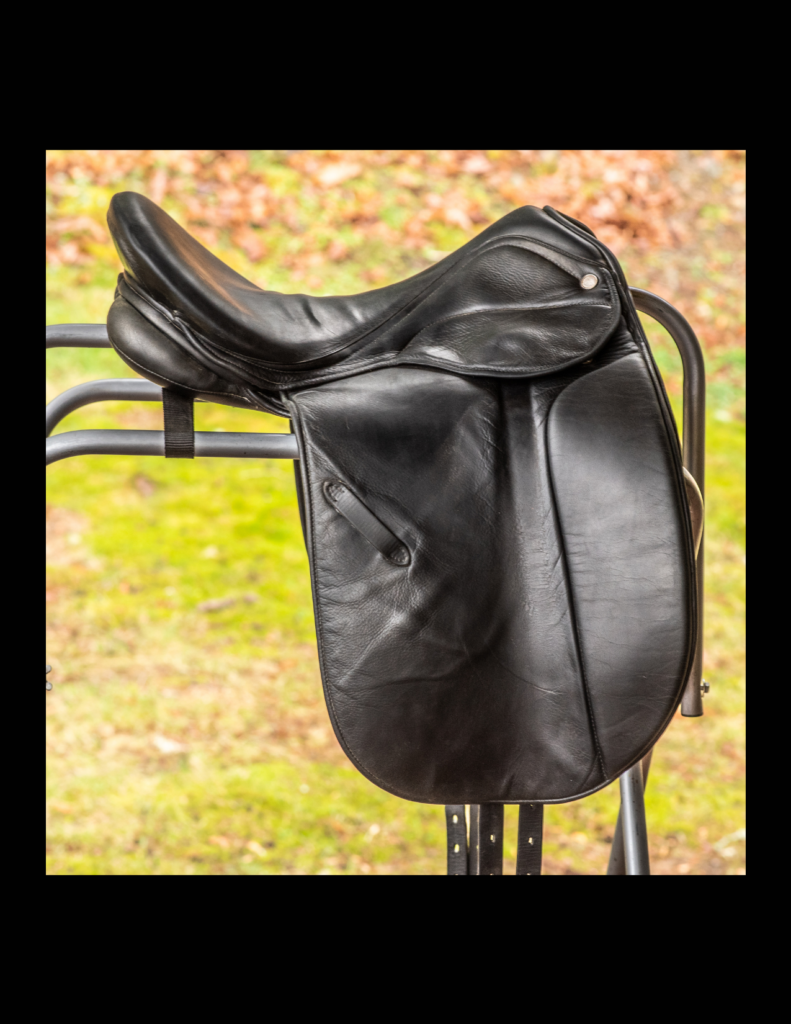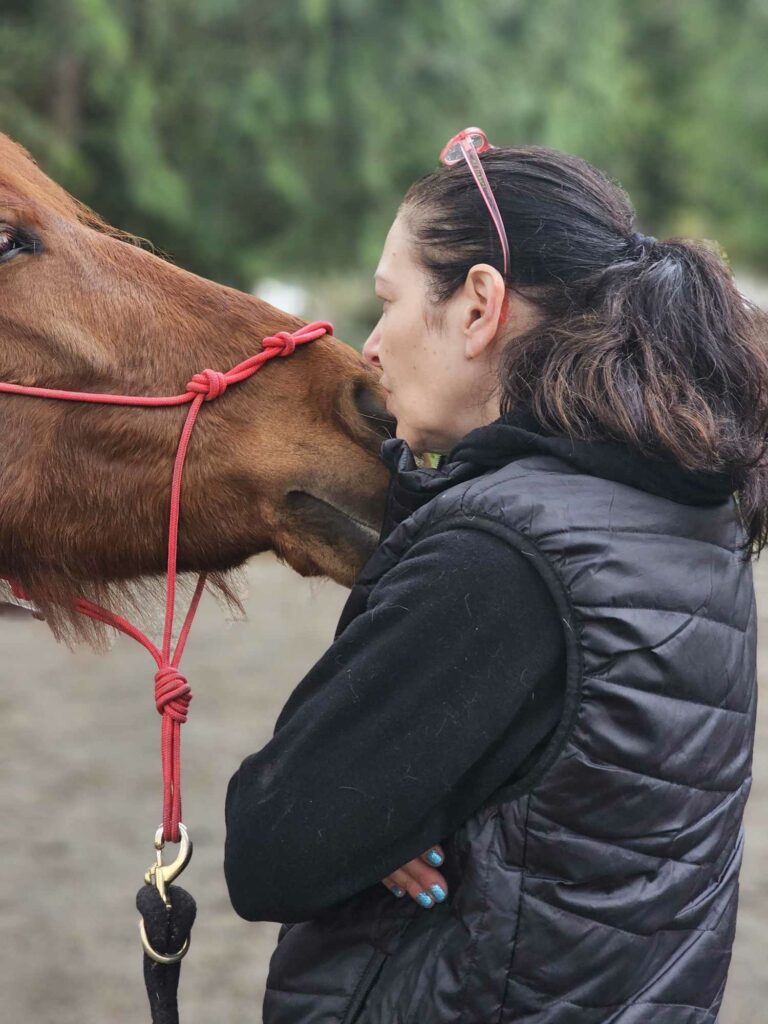
Congratulations! You got a new saddle!
Maybe it’s a brand new saddle, with that new saddle smell fresh off the showroom floor. Maybe you bought a solid used saddle from a consignment tack store, or off of the Internet. No matter where you got your new, or new to you saddle, the why of your new saddle was because you felt that you needed to replace your old saddle and it’s been a long, and sometimes frustrating journey, but it’s finally over. You did it! You found the perfect saddle! It fits you! It fits your horse! It’s undamaged, both structurally and cosmetically. It’s perfect! Your riding posture is better in this saddle, your leg naturally hangs in the right position, and your horse moves better in it, too. It was definitely an investment, but you know you did the right thing.
There are loads of perfectly valid reasons that riders switch up their saddles. Sometimes it’s just because the rider wanted a ‘better’ saddle than they had, upgrading to a more prestigious brand. Sometimes the new saddle is a different design than what they currently had been riding in, but 99% of the time riders change their saddles in the first place, is because they recognized that their old saddle was causing issues of one kind or another.
Buying a saddle isn’t easy, or fun, no matter who told you what. There are so many variables to proper fit, for both you and your horse. It’s likely that if you bought your saddle on your own, without the help of a saddle fitter, you tried so many saddles on trial, you thought you would lose your mind! Some just didn’t fit your horse. Others didn’t fit you at all. Still, others seemed to fit both of you – Until you mounted up and it lamed your horse, or pushed you into an incorrect position forcing you to fight with gravity, or both as is so often the case.
And let’s be honest, if you’re not a qualified, trained saddle fitter, do you really know if the saddle fits? Even professionals get it wrong sometimes. Horses can be stoic. Not all of them will let you know they’re in pain. In fact, it’s to their advantage from a survival standpoint to hide pain from the world. Hurt horses get eaten first, and they all know this instinctually. To understand how a saddle fits a horse, you must have a working knowledge of equine anatomy and biomechanics. Sure. the saddle looks like it fits, but did you know you had to check for scapular clearance, or how to? How long do the panels need to be? Is it wide enough? Too wide? is the angle going to work with your horse’s barrel? It’s not your fault if you don’t know how to evaluate saddle fit, and it’s not your fault for not knowing what you don’t know.
GOOD FOR YOU for realizing that your saddle was the culprit! With the new saddle, you probably noticed right away that your position is definitely better, and you horse moves much better now too, But is that all? Is that chapter closed? Is there anything else you can, and should do to support your horse’s over all health besides changing your saddle alone? The short answer is YES!
If you replaced your old saddle because you were experiencing the dreaded training plateau, it’s entirely possible that the reason your old saddle wasn’t working for you was that it was causing subtle damage to your horse’s fascial system. Damage, that if not addressed becomes permanent. These injuries might not be overt, or even present as your typical lameness, but left unaddressed, these fascial holdings can dramatically and negatively impact your horse’s overall health and well being. The good news is, that no matter how old these holdings are, the QHE 5 Series can release them, leaving your horse more comfortable, and balanced in harmony with gravity.
It is entirely possible for a horse who had a saddle fit injury when they were young to develop arthritis in their sacroiliac joint in the far future due to the omnipresent forces of the fascia pulling on the structures of the horse’s body. The QHE 5 Series restores balance to the horse. Due to the very nature of the fascia, small injuries in your horse’s fascial system today can lead to far reaching and mysterious problems later in life.
Your horse’s body creates the compensation pattern holdings to compensate for the injured body part. The fascia will create new patterns in its flow, interrupting it’s unimpaired, ‘slide and glide’ non-Newtonian fluid state. The fascia can create all kinds of havoc that defies explanation by traditional medical thinking. Case in point: The case of an off track thoroughbred who was highly reactive to any touch on his right shoulder. The vet couldn’t find a reason in the shoulder for him to react like that, and suggested that they have a chiropractor come out. Although he was adjusted, the behavior did not change. He still reared when his right shoulder was even lightly touched.
Then I came in, and did a QHE 5 Series on him. As his body unwound and balanced, his shoulder clearly wasn’t the root of his issue at all. It was referred pain! It turned out that his reaction to having his right shoulder touched was a result of a fascial holding that his fascia created to compensate for an injury in his left hock. His body compensated for the years old hock injury, which likely happened when this old war horse was still on the track, causing him pain in his right shoulder years later. When the holdings were removed, the vet was able to diagnose the injury and recommend proper treatment. Today, I’m thrilled to say that horse is thriving, and pain free. Now, granted, that horse’s issue was not due to poor saddle fit, he was a race horse, but the point remains. Fascia will compensate for injuries, creating future health and soundness problems if left unaddressed.
So, yes. Incorrect saddle fit really can create long term problems for your horse, even if they’re not obvious today. The good news is, there IS something you can do to help your horse ‘reset’ their bodies after their fascia has been damaged by compensating for your old saddle. The QHE 5 Series!
By addressing and manipulating your horse’s fascial system with a QHE 5 Series, their body will release these adhesions in their fascia, no matter how old they may be. The horse balances front to back, and side to side, in harmony with gravity, unwinding all of the compensatory holding patterns created by your old saddle. This allows for their body to ‘fit’ the new saddle much better than it would if they were still holding the compensatory patterns they created to alleviate pressure and pain from the old saddle that you just replaced.
Congratulations again on your awesome new saddle, consider booking your free consultation with me to find out if the QHE 5 Series is right for your horse as you switch saddles, and happy riding!
